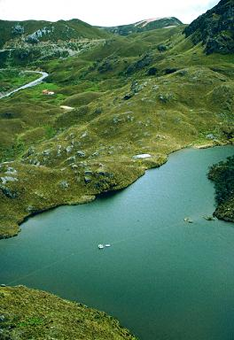NOAA/WDS Paleoclimatology - Little Swift Lake, Alaska 12KYr Multiproxy Sediment Data
This archived Paleoclimatology Study is available from the NOAA National Centers for Environmental Information (NCEI), under the World Data Service (WDS) for Paleoclimatology. The associated NCEI study type is Lake. The data include parameters of paleolimnology with a geographic location of Alaska, United States Of America. The time period coverage is from 12236 to 0 in calendar years before present (BP). See metadata information for parameter and study location details. Please cite this study when using the data.
Dataset Citation
- Cite as: Axford, Y.; Kaufman, D.S. (2010-10-03): NOAA/WDS Paleoclimatology - Little Swift Lake, Alaska 12KYr Multiproxy Sediment Data. [indicate subset used]. NOAA National Centers for Environmental Information. https://doi.org/10.25921/ht70-sk78. Accessed [date].
- Please refer to Credit tab for full citation information.
Dataset Identifiers
- doi:10.25921/ht70-sk78
- noaa-lake-9899
- NCEI DSI 1200_02
- NCEI DSI 1200_01
ISO 19115-2 Metadata
noaa-lake-9899
| Search Data |
|
| Download Data |
|
| Distribution Formats |
|
| Ordering Instructions | Contact NCEI for other distribution options and instructions. |
| Distributor |
NOAA National Centers for Environmental Information ncei.info@noaa.gov |
| Dataset Point of Contact |
NOAA National Centers for Environmental Information ncei.info@noaa.gov |
| Dataset Point of Contact | Data Center Contact NOAA World Data Service for Paleoclimatology 828-271-4800 paleo@noaa.gov |
| Coverage Description | Date Range: 12236 cal yr BP to 0 cal yr BP; |
| Time Period | -10286 to 1950 |
| Spatial Bounding Box Coordinates |
West: -159.7658
East: -159.7658
South: 60.2144
North: 60.2144
|
| Spatial Coverage Map |
| General Documentation |
|
| Associated Resources |
|
| Publication Dates |
|
| Data Presentation Form | Digital table - digital representation of facts or figures systematically displayed, especially in columns |
| Dataset Progress Status | Complete - production of the data has been completed |
| Data Update Frequency | Data update frequency not available |
| Supplemental Information | STUDY NOTES: Multiproxy sediment data covering the last 12,000 years from Little Swift Lake, southwest Alaska. Data include major-element geochemistry, grain size measurements, loss on ignition, magnetic susceptibility, and pollen counts. Core LS-A, a 575-cm-long sediment core, was recovered from Little Swift Lake in 14.7 m of water in summer 1998. The lake is 24 m deep and has 0.7 km2 surface area. ABSTRACT SUPPLIED BY ORIGINATOR: Multiproxy data from Little Swift Lake, an alpine lake in southwestern Alaska, provide evidence for pronounced late glacial and Holocene environmental change. An alpine glacier upvalley of Little Swift Lake retreated following the Younger Dryas chronozone, as evidenced by sedimentological changes in the lake record. Glacier retreat was accompanied by local and regional vegetation changes, including the expansion of Betula and contraction of Cyperaceae, in response to climatic amelioration. Warm, moist conditions between ~9800 and 8000 cal yr B.P. supported abundant Betula shrubs and high lake and watershed productivity. Alnus rapidly expanded near Little Swift Lake while the region cooled between 8000 and 7500 cal yr B.P. Environmental changes at Little Swift Lake appear to have been roughly synchronous with similar changes elsewhere in southwestern Alaska, but late glacial and Holocene changes in other parts of Alaska were different in nature and timing. The complex spatial and temporal patterns of late glacial and Holocene environmental change throughout Alaska point to the importance of local and regional-scale factors, especially controls on moisture availability, as modulators of site-specific responses to hemispheric- and global-scale climate forcing. |
| Purpose | Records of past climate and environment derived from lake sediment records. Parameter keywords describe what was measured in this dataset. Additional summary information can be found in the abstracts of papers listed in the dataset citations. |
| Dataset Citation |
|
| Cited Authors |
|
| Originators |
|
| Publishers |
|
| Theme keywords |
Global Change Master Directory (GCMD) Science Keywords
|
| Data Center keywords |
Global Change Master Directory (GCMD) Data Center Keywords
|
| Place keywords |
|
| Use Constraints |
|
| Access Constraints |
|
| Fees |
|
Last Modified: 2023-09-08
For questions about the information on this page, please email: ncei.info@noaa.gov
For questions about the information on this page, please email: ncei.info@noaa.gov

